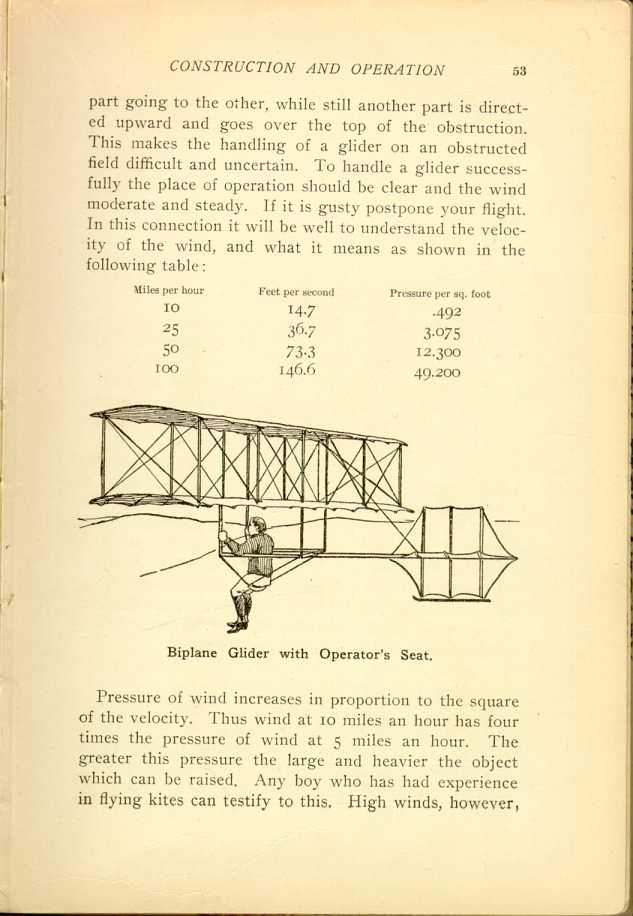| CHAPTER VI.
LEARNING TO FLY. Flying Machines: Construction and Operation: A Practical Book Which Shows, in Illustrations, Working Plans and Text, How to Build and Navigate the Modern Airship. | ||
Effects of Wind Currents.
The larger the machine the more difficult it will be to control its movements in the air, and yet enlargement is absolutely necessary as weight, in the form of motor, rudder, etc., is added.
Air currents near the surface of the ground are diverted by every obstruction unless the wind is blowing hard enough to remove the obstruction entirely. Take, for instance, the case of a tree or shrub, in a moderate wind of from ten to twelve miles an hour. As the wind strikes the tree it divides, part going to one side and
| Miles per hour | Feet per second | Pressure per sq. foot |
| 10 | 14.7 | .492 |
| 25 | 36.7 | 3.075 |
| 50 | 73.3 | 12.300 |
| 100 | 146.6 | 49.200 |
Pressure of wind increases in proportion to the square of the velocity. Thus wind at 10 miles an hour has four times the pressure of wind at 5 miles an hour. The greater this pressure the large and heavier the object which can be raised. Any boy who has had experience in flying kites can testify to this, High winds, however,
| CHAPTER VI.
LEARNING TO FLY. Flying Machines: Construction and Operation: A Practical Book Which Shows, in Illustrations, Working Plans and Text, How to Build and Navigate the Modern Airship. | ||
